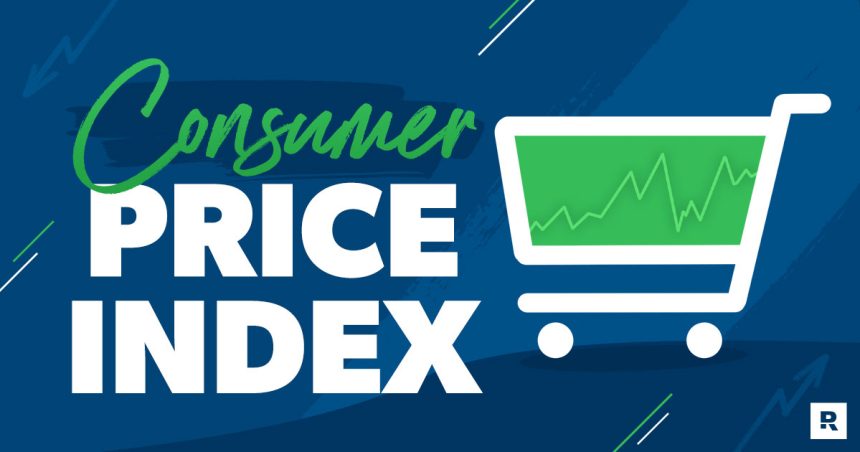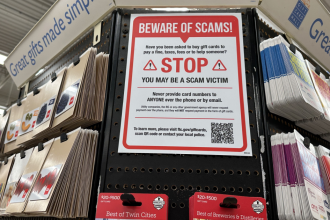Have you ever had conversations with your grandparents about the good ole days? Back then, Grandpa could take Grandma to dinner and a movie for less than two bucks, a gallon of milk cost just 75 cents, and they bought their first home for less than $10,000.1,2,3 These days, those prices seem so cheap that they may as well be from the Stone Age.
Obviously, prices haven’t been that low in a long time. But you might have noticed much higher totals while in the checkout line lately. In fact, from September 2021 to September 2022, U.S. consumer prices jumped 8.2%.4 How do we know that? By looking at the Consumer Price Index, of course.
Okay . . . but what is the Consumer Price Index? How does it work? And is there some sort of formula to calculate inflation rates?
All right, buckle in, folks. We’re about to talk about a lot of economic terms and numbers. But don’t worry—we’re going to make this ride through the Consumer Price Index as smooth and painless as possible.
What Is the Consumer Price Index?
The Consumer Price Index, or CPI, measures the average price of goods and services over time. It’s calculated by the U.S. Bureau of Labor Statistics (BLS) and is used to keep track of the prices of everyday expenses—things like gas, food and rent.5 It’s also the main tool economists use when they’re trying to study inflation or deflation.
In other words, the CPI is tracking how much your turkey cost this Thanksgiving compared to last year, and the year before that, and the year before that . . . you get the idea. The CPI tracks more than 200 categories of goods and services, arranged into eight major groups:
- Food and beverages
- Housing
- Apparel
- Transportation
- Medical care
- Recreation
- Education and communication
- Other goods and services6
By keeping track of the average prices that we pay for things, economists can also better measure the purchasing power of the U.S. dollar (that’s a fancy way to say how far the dollar can go to cover the price of items).
How Does the Consumer Price Index Work?
It’s hard to understand how the CPI works without first understanding inflation, so let’s do a quick lesson. (It’ll be way less painful than high school economics, we promise.)
What Is Inflation?
In basic terms, inflation is when the prices of goods and services go up. It’s measured by how much prices rise over time and keeps an eye on how the value of money falls because of those price hikes. And while inflation has pretty much existed as long as the economy has, it’s definitely been felt pretty hard these past few years. Our Ramsey State of Personal Finance report found that 3 in 4 Americans say they’ve noticed higher prices for things they normally buy.
An easy way to think about inflation is with a simple math equation. Let’s say in 2020, your favorite brand of soda cost $1 a can. So, one soda equals $1. But then in 2021, that soda brand raised their price to $1.25 a can. It’s the same exact can of soda, but now that can’s value is worth more than your dollar. And because of that, your dollar is worth less.
Now that you have a better understanding of inflation, let’s jump back to CPI. The CPI is what’s used to measure the average change in price that we—the consumers—pay for goods and services. The BLS has reported the CPI on a monthly basis since 1921, with data going as far back as 1913.7
How Are Consumer Price Index Prices Collected?
Data collectors visit or call thousands of retail stores, restaurants, spas, rental units, doctor’s offices and more from places all over the country (in person or on the web) and report their prices back to the Bureau of Labor Statistics. And they record the prices of about 80,000 items each month!8 If this sounds like a painstaking process, that’s because it is.
Start budgeting with EveryDollar today!
The process isn’t always black and white either. If a data collector finds that one of the items they recorded last month can’t be recorded again this month—like if it’s no longer being sold or the size of the container has changed—they have to choose another item to track or update the item to reflect the change.9 All of the information is sent to the national office, where BLS specialists look at the data, make sure it’s accurate and consistent, and make any corrections or adjustments.10
Because the CPI data is published monthly, it represents the prices for the entire month, not just the prices of the date the data was collected. This means that data for things that can change pretty quick in a month—like gas prices—may be a little off.
How to Read the Consumer Price Index
While price tracking seems simple enough, looking at the CPI is anything but easy. In fact, if you’re not a fan of numbers, even a quick glance at the index may make you a little queasy. But there’s a method to the madness when it comes to understanding the CPI.
It all starts with this equation: 1982–84 = 100.11 (We know that looks scary, but just bear with us here.)
The numbers 1982–84 represent the average price level for the 36-month period covering the years 1982, 1983 and 1984. The BLS set that price level to 100 as the baseline, and every price that comes after the year 1984 is based off of that 100.12
So, for example, if the CPI of a certain year is 110, you would subtract 100 (the baseline) and get 10, and that means that inflation has risen 10% since the year 1984. A reading of 250 would mean inflation has risen 150% since the year 1984.
How to Calculate the Consumer Price Index
You might still be wondering where those CPI readings come from and how to calculate the inflation rate. Are you ready for even more math? Don’t worry, we’ll keep it simple.
If you’re looking to calculate the inflation rate for a single item, you would use this CPI formula:
Later CPI – Past CPI
—————————— x 100 = Inflation Rate
Past CPI
Here’s how it works: Let’s say you wanted to find out what the rise in inflation was for fast-food hamburgers from 1982 to 2012. Well, the average cost of a fast-food hamburger in 1982 was 70 cents, and in 2012 it was $2.61.13 So the formula would look like this:
$2.61 – $0.70
—————————— x 100 = 272.86
$0.70
That means the inflation rate on fast-food hamburgers shot up a whopping 273% between 1982 and 2012.
Phew! Okay, math class is over. That wasn’t so bad, was it?
How to Prepare for Rising Consumer Costs
The one thing you’ll notice with the Consumer Price Index is that the prices are almost always guaranteed to go up. Joy! The good thing is, inflation typically rises at a steady rate, and we don’t notice it much. But sometimes, things get a little wacky, especially after an economic or global crisis (2020, anyone?). And that’s when prices shoot up a little more than normal—which is why we’re all feeling the pain in our wallets right now.
But before you panic and start bulk buying toilet paper again, know that there are plenty of ways to prepare for these rising costs.
1. Stay calm.
Yes, it’s worth saying it again. When people start noticing big increases in prices, they go a little bit crazy. Cue people filling up every container they own with gasoline. Don’t fall for it! Slow down, breathe, and take it easy. We can’t stress this enough: You can prepare without panicking. And the first step here is just keeping your cool.
2. Find ways to cut costs.
If you’re feeling that pinch while paying for your family necessities, look for ways to cut costs. Make a list before you go to the store and find ways to lower your grocery bill. You could also figure out how to save money on gas, like carpooling to work. Or make a few changes in your home to lower your electric bill.
Here are some other ideas on how to keep up with rising consumer costs from people we surveyed in our Ramsey State of Personal Finance report: 38% of folks have looked for coupons or sales, 32% have bought less than they normally would, 29% have put off purchasing an item, and 25% have switched to the store brand. So, you’re definitely not alone in trying to make your dollars cover more ground these days.
3. Budget.
We know it stinks when you have to tweak your budget to make room for rising prices, but you can always find ways to keep from going over budget by cutting costs elsewhere. Inflation or not, you’re still in control of your money. And armed with a budget, you’ll be able to make sure your money is going toward the right things while being able to find places where you can cut back your spending.
Let the budget be your guide as you look for places to cut back so you can beef up your grocery cash to cover those expensive fruits and veggies. Maybe you skip out on that trip to the beach this year and trade it for a low-budget camping trip. Figure out what’s worth sacrificing—and make those changes.
And on the bright side, budgeting has never been easier than with our free EveryDollar app. EveryDollar takes the guesswork out of managing your money by letting you to decide where every dollar is going before the month begins. Plus, EveryDollar makes it super easy to customize your budget on the fly. So if the price of milk rises again, you can quickly increase your grocery budget (and maybe lower that restaurant budget) to make sure you stay on track.
Read the full article here
















